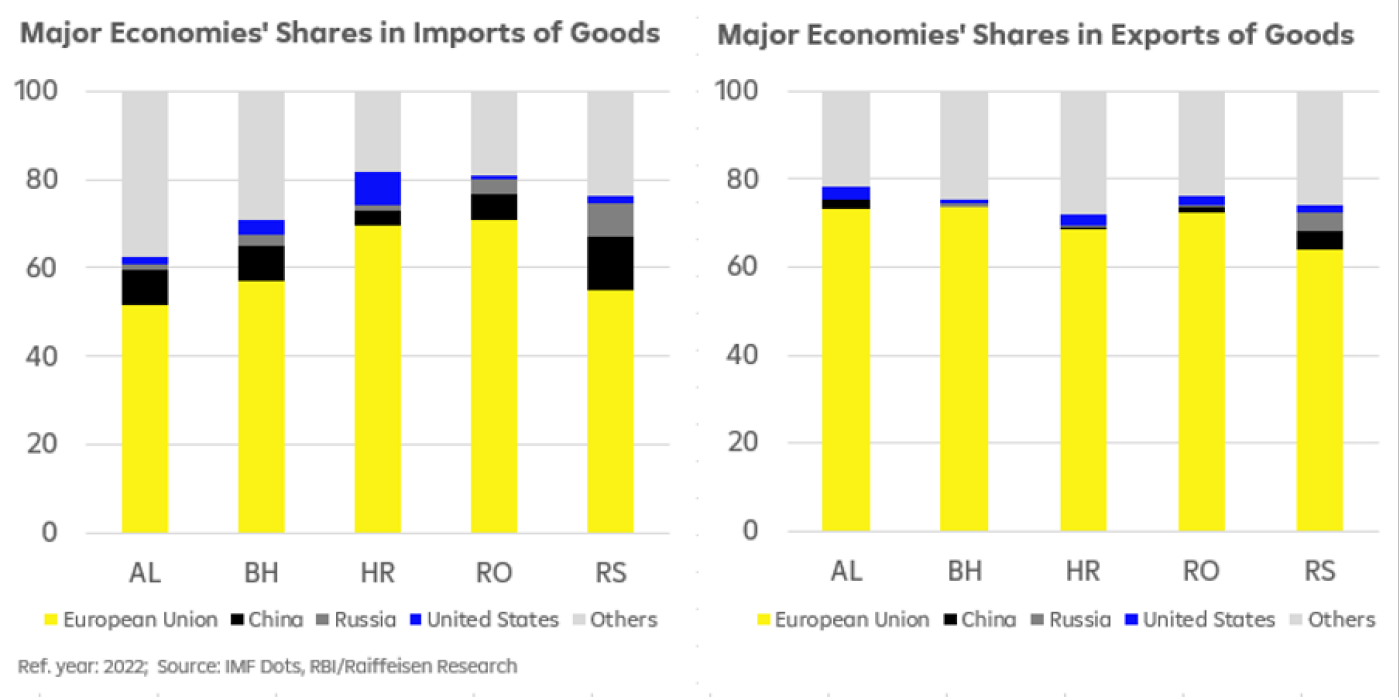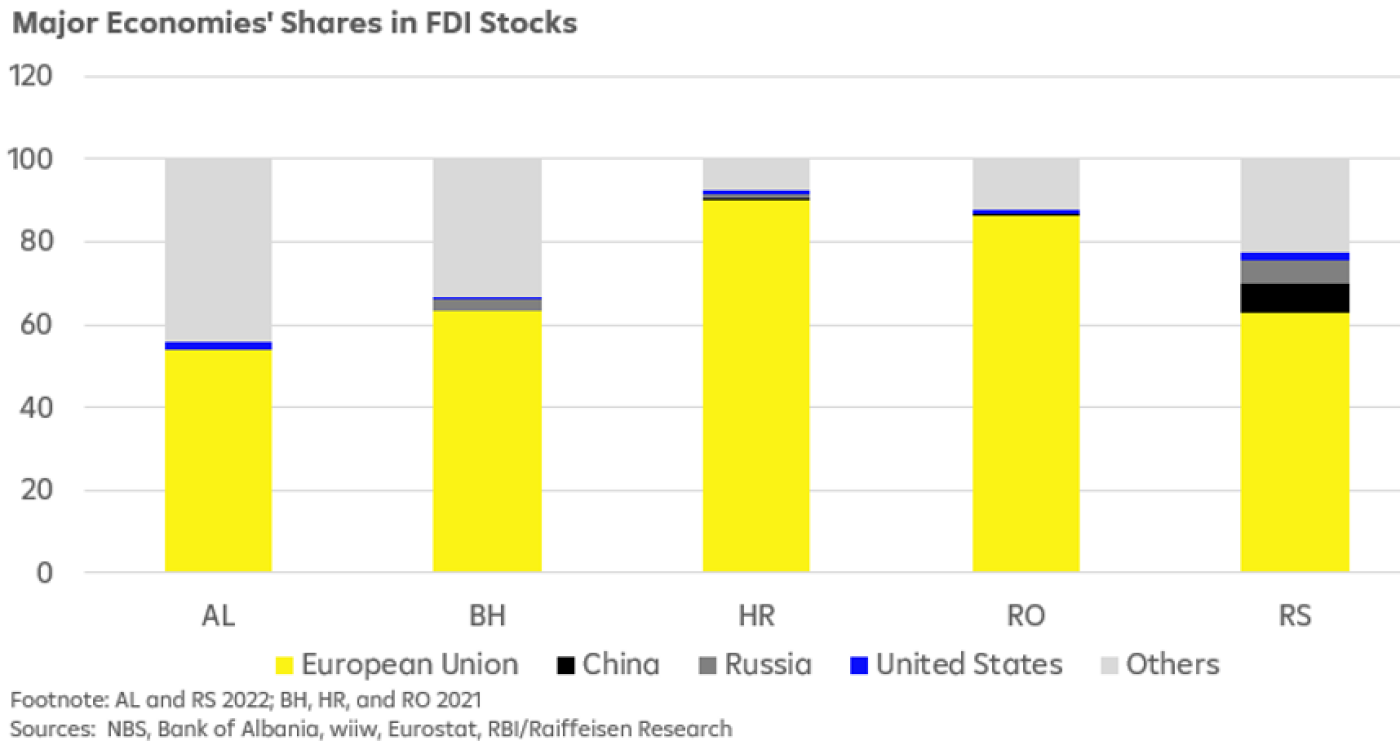
China's footprint in the Balkans – CEE market research | RBI Insights
We analyze China’s expanding influence in the Western Balkans amid EU fatigue, trade imbalances, and global security concerns, prompting a reevaluation of regional partnerships.
In the last decade, China has increased its presence in the Western Balkans and thus also expanded its influence. In 2012, the cooperation between China and Central Eastern European countries was initiated, and a year later, the Belt and Road Initiative. Both aimed at deepening cooperation in terms of trade, investment, and infrastructure.
Filling the gap: EU fatigue in the last decade
For many SEE countries, this cooperation was a welcome opportunity, as the EU opened this gap by showing less interest in closer relations or EU accession for the SEE countries during this period. Instead, arbitrary demands and delays resulted in EU fatigue in parts of the region.
Consequently, some countries sought new partners to access development opportunities and meet financial requirements, given the need for infrastructure improvement and growth prospects. Despite this, the EU remained a central partner, especially regarding economic integration through trade, remittances, and foreign direct investments in many SEE countries.

The EU's share of trade with the SEE countries was around 65% in 2022, while China was significantly lower at 4.5%. The lion's share of the latter comes from imports from China, which, in turn, led to a highly asymmetrical relationship and substantially widened the trade deficit between SEE countries and China. Accordingly, the relationship is strongly tilted in China's favor, which from the beginning pursued the goal of reaching new export markets, alongside other objectives.

The EU continues to be the largest investor in terms of FDI stocks, while FDI flows from China are rapidly increasing, mainly focused on Serbia. In 2022, China’s FDI flows to Serbia even matched those from the EU. However, the lower FDI flows to other countries also stem from China’s focus on providing loans with conditions that involve commissioning Chinese companies for infrastructure projects, leading to criticism due to non-transparency, environmental damage, and contributing to debt crises in some countries.
For instance, the controversial billion-euro highway project in Montenegro significantly increased the national debt, raising the question of whether the small country will manage to repay it, while the benefit of the project is doubtful.
Despite these criticisms, China provided countries with opportunities to undertake projects and presented seemingly attractive offers when other investors were not present. Additionally, without China’s involvement, prestigious projects such as the Peljesac bridge in southern Croatia may not have been realized as swiftly.
War in Ukraine: Strained relationship
Supply shortages due to the pandemic and Ukraine war have underscored the need for supply chain diversification and de-risking, while also revealing global rifts. In the context of nearshoring, there are opportunities for SEE countries to further develop in closer collaboration with the EU, potentially putting them in direct competition with China.
However, global security concerns also extend to external influence on critical infrastructure such as ports and telecommunication networks. In general, a fragmented world comes with costs, potentially leading to less efficient solutions. Furthermore, a decoupling scenario, especially in light of a possible Trump presidency, would be more damaging for Europe, given its deeper ties with China.
De-risking and more stable supply chains remain a sensible goal from which the SEE region could benefit, but drifting further apart on a global level will defer handling urgent problems such as the climate crisis, which requires worldwide cooperation.
To end on a positive note, the war has also led to the realization within the EU that EU expansion is necessary, creating a new momentum that, through investments and political will, brings the SEE countries closer to the EU and offers new prospects.

Expand to new markets
Get more exclusive market insights like this one and partner up with us for your CEE journey! Request our exclusive white paper now and discover group-wide solutions.
Related News
Be the first
Subscribe to Raiffeisen Insights. Get an email with
the latest trends in the world of economics and business.